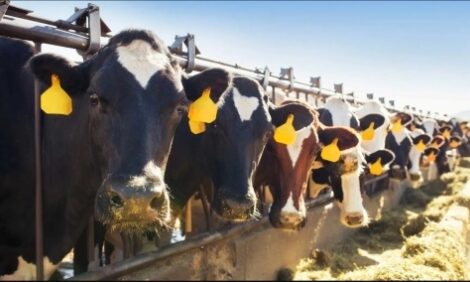



How do Crude Oil Prices Affect Livestock Feed Prices?
GLOBAL - The global livestock and aquaculture feed market prices are becoming more and more dependent on the movement of the Brent crude oil market.As more oilseeds and vegetable oils have been diverted into biofuels over the last 15 years, the fluctuations of oil prices have been matched by movements in vegetable oil and oilseed prices.
Speaking at the Agricultural and Horticultural Board’s Grain Market conference in London on Wednesday (14 October), Julian McGill from LMC International said that a transformation occurred in vegetable oil markets because of biofuels policy.
He said that until 2002 the harvested area of oilseeds and vegetable oils had remained static, but had risen sharply as vegetable oils started to be blended for biofuels – maize for ethanol in the US and soy oil and rapeseed oil for biodiesel.
Biofuels saw a rise in both maize and oilseed and vegetable oil production, but the increase in production was also boosted by an increase in wealth in developed and developing nations and a consequent rise in consumption of meat.
This rise in meat consumption called for more livestock feed, largely produced from soymeal, the by-product of the soya crush.
Mr McGill said that growth in production has been particularly rapid for animals, which consume a high protein feed.
He said there has been a rapid rise in the consumption of both poultry meat and aquaculture products in recent years as the market has been looking at species that breed quickly to meet the growing demand for meat and this rise has produced a growing demand for meal.
This growing demand has sustained increases in soymeal prices compared to those of maize.
However, Mr McGill added that since 2007, the prices of vegetable oils have mirrored that of Brent crude as an ever larger proportion of production has gone into biofuels.
At present, he said, the production of vegetable oils in the EU for biofuels was almost the same as that for food.
The movement of vegetable oil and oilseed prices are driven by the movement of the crude palm oil price, the cheapest and most abundant vegetable oil, because it is produced all year round.
He said that when palm oil prices are at a parity with crude oil prices, free market blending of biodiesel creates a floor and this is supported by the fact that palm oil from South East Asia is at a discount to crude oil.
Mr McGill said that as demand for biofuels has slowed prices have declined, but the demand for meal remains strong.
While crude palm oil and rapeseed oil prices are expected to recover compared to crude oil, they could be hit by greater crushing of soybean for meal.



